Up into the "Nockberge" ...
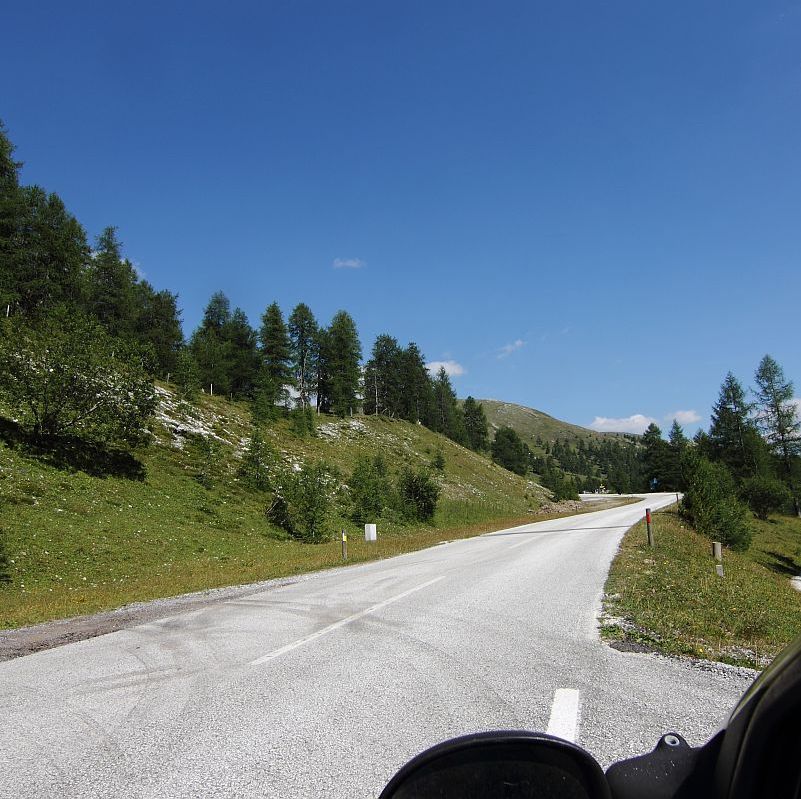
... to the pass at parking site Eisentalhoehe on 2040 m
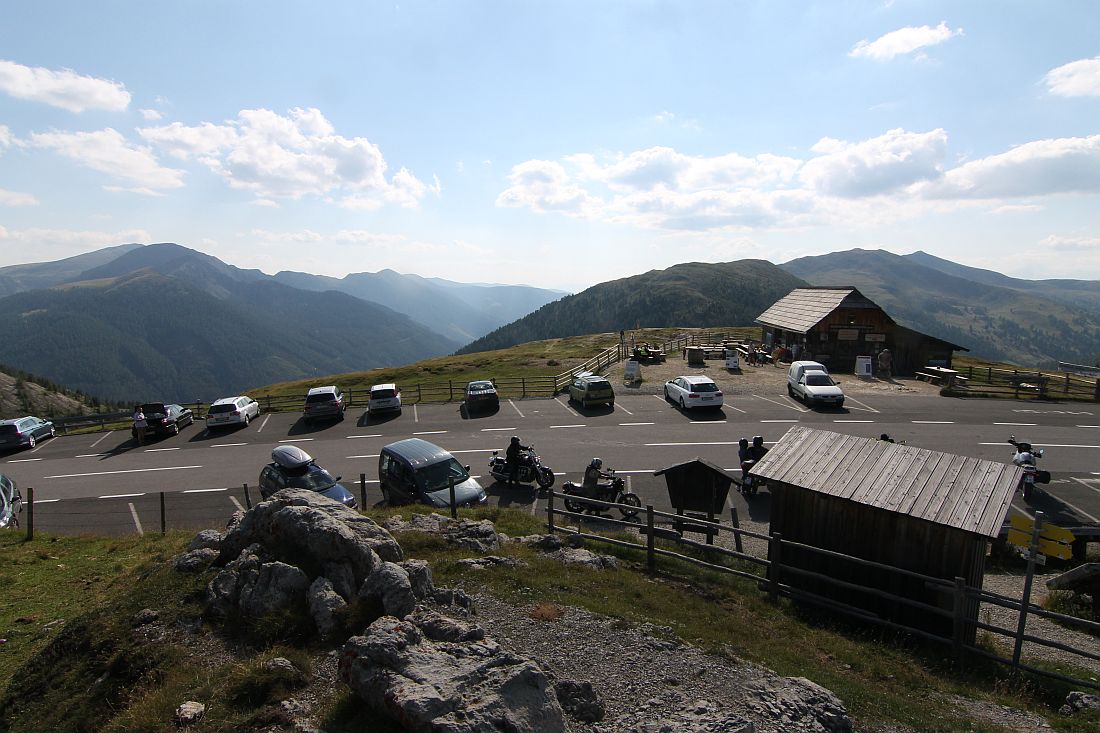
Up into the "Nockberge" ...
|
... to the pass at parking site Eisentalhoehe on 2040 m
|
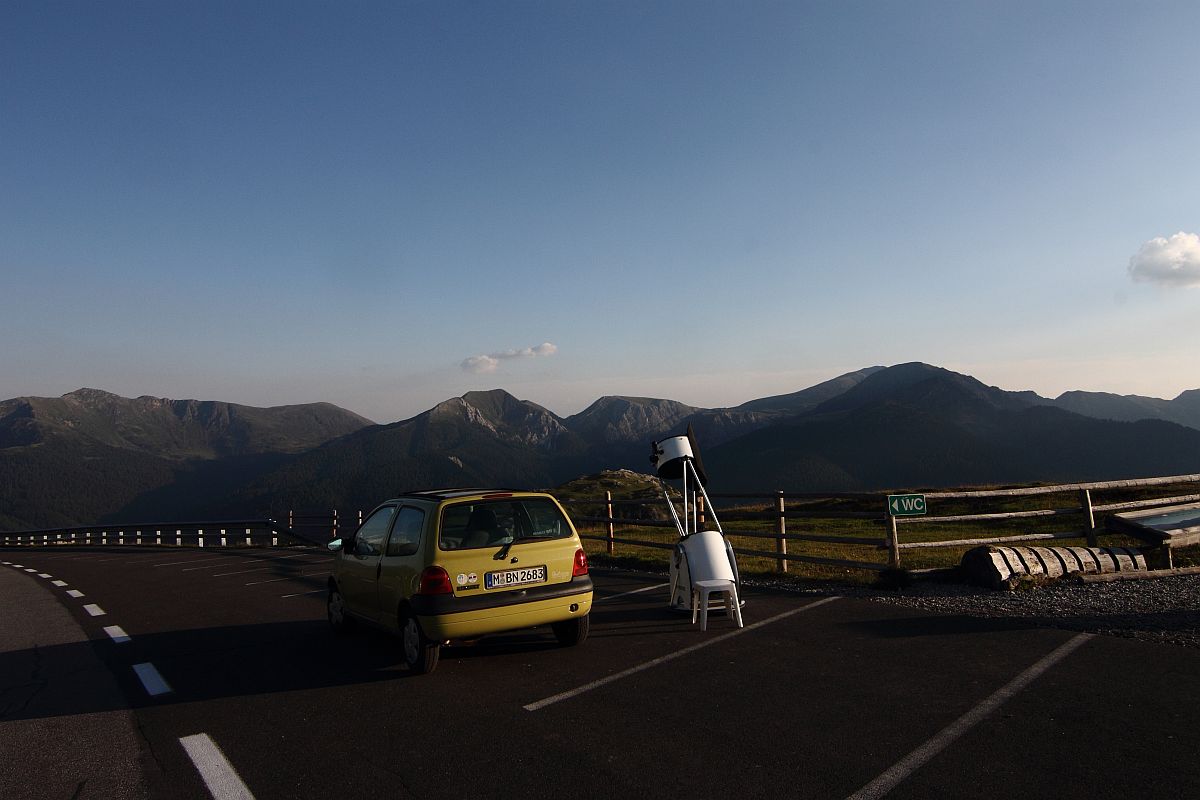
The innkeeper closed the snack-bar in the evening; she returned home to the valley and came back the morning - so it was dark up there.
And there were nearly no cars during the night, but I don't know what it's like on the weekend. But I was not completely alone in either
of the nights: There was one couple sleeping in a motorhome respectively, and they had all never really looked through a telescope -
let alone a 16-inch in high-alpine conditions. So I got an enthusiastic feedback when showing them Albireo, h+Chi, M11, M27, M57,
M17, Veil Nebula with OIII-Filter, M31 and especially M13 and Saturn: "Wow ! I go crazy ! Come here, you must see that !"
That's the kind of feedback that is most rewarding :)
These were two nights of excellent transparency, totally dry, and apart from a strip on the horizon the sky was overall decidedly dark -
the Milky Way was brilliant. The first night was entirely clear, while the second had some cirrus in the beginning and the end. My guess
for the limiting magnitude was fst=7.2. The seeing was in part also quite good, the image was sometimes really sharp with 300x,
but less so with 400x
At the 16-inch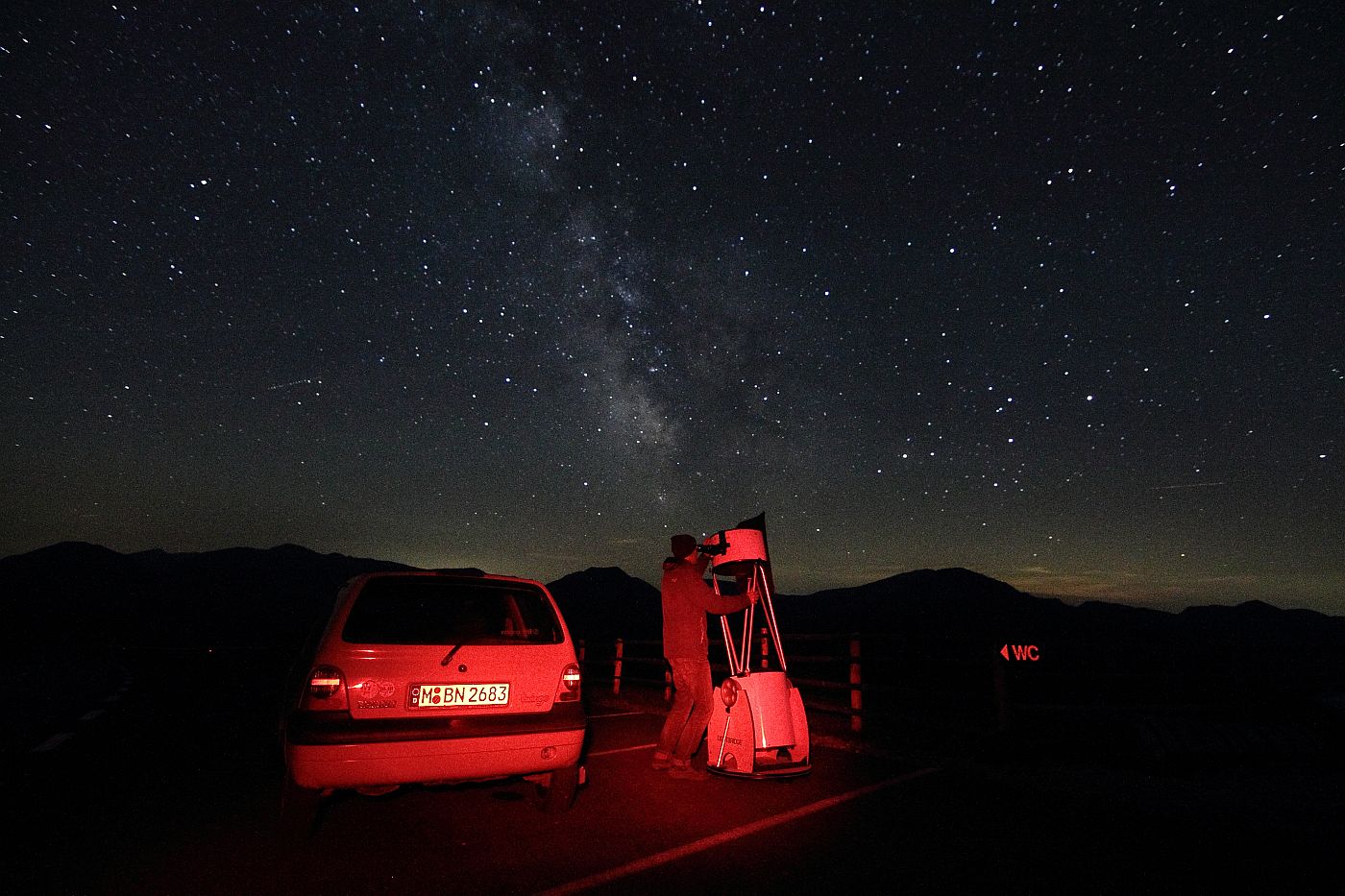
|
View to Northwest
|
This time I took some closer look at some planetary nebulae: With a magnification of 300x and 400x the objects NGC 40 in Cepheus, NGC 6905 in Delphinus
und NGC 6804 in Aquila showed some details; interesting is the comparison to the very detailed drawings on the great homepage of Uwe Glahn - in the chapter
"Planetarische Nebel" - which Uwe had also drawn using a 16-inch in these cases. I lacked magnification in the case of NGC 40 in Cepheus, whereas I recognized
some of Uwe's details in the latter objects: Some structure in NGC 6905, and the central star, and the inner ring of NGC 6804 with a hint of some brighter areas.
And close by to NGC 6804 also the small NGC 6803 and - ghostly but clearly discerned with an OIII-filter - Abell 62. And NGC 6781 nicely showed the
horseshoe opening to the North with 140x.
Interesting were also the planetaries NGC 7048, NGC 6894 - nicely seen as a ring nebula - and NGC 7008 in Cygnus; NGC 7008 showed very impressive details
with 300x and 400x and confirmed the designation "Fetus Nebula" - these three objects are very suitable already for a 10-inch. And I could well discern the two
opposing shells of NGC 7026 with a magnification of 300x.
Moreover I tested my new 2-inch UHC-filter on the 21mm Ethos eyepiece, with 86x, in the area of the North America Nebula and the nebulous regions around
Gamma Cygni - with many details. And in between leasurely observing pet objects like NGC 891, some autumn galaxies or the dense cluster NGC 7789.
2x Milky Way: In the first ...
|
... and second night
|
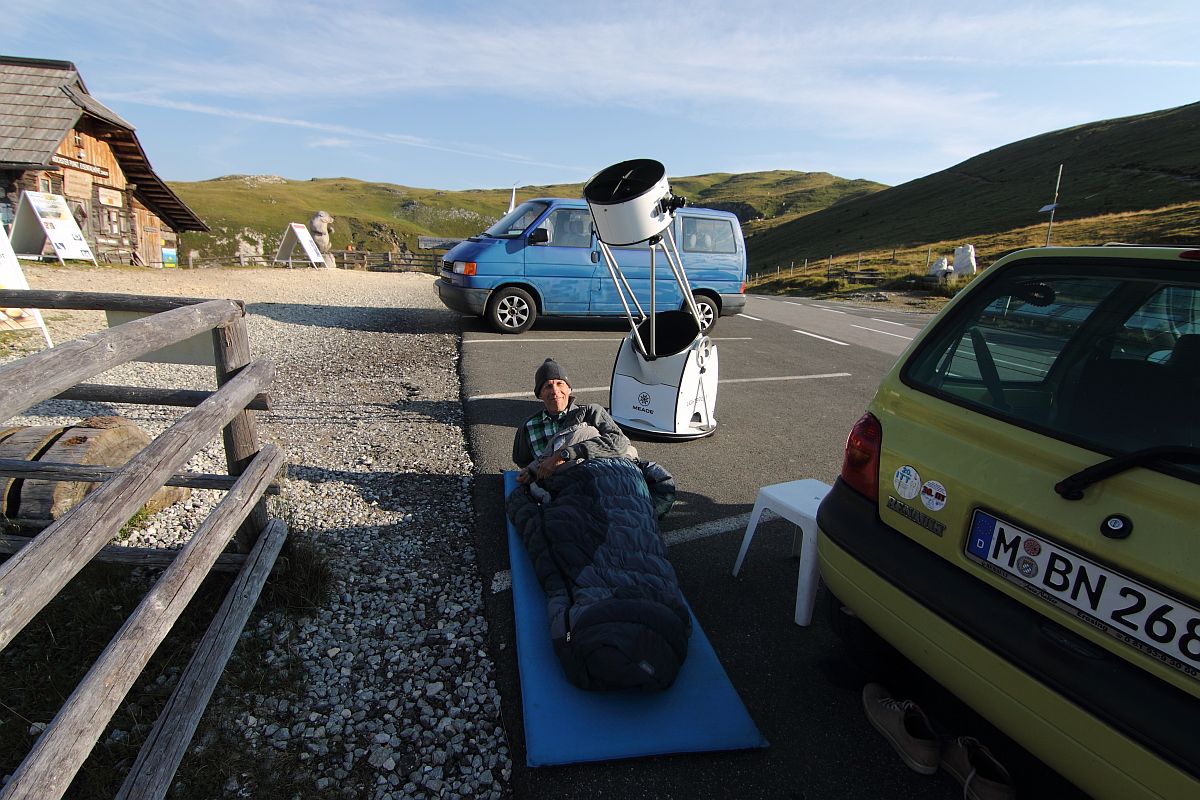 The forecast was good for the next two nights as well, but a classical "social event" waited on Wednesday evening: The joint observing of the
The forecast was good for the next two nights as well, but a classical "social event" waited on Wednesday evening: The joint observing of the
Glockenhuette cabin on another pass (alt. 2027 m)
|
At lake "Windebensee"
|
A hike in a wide landscape: On mount "Eisentalhoehe" (alt. 2180 m)
|
Mountain arnica, dwarf gentian (left) and bluebell
|